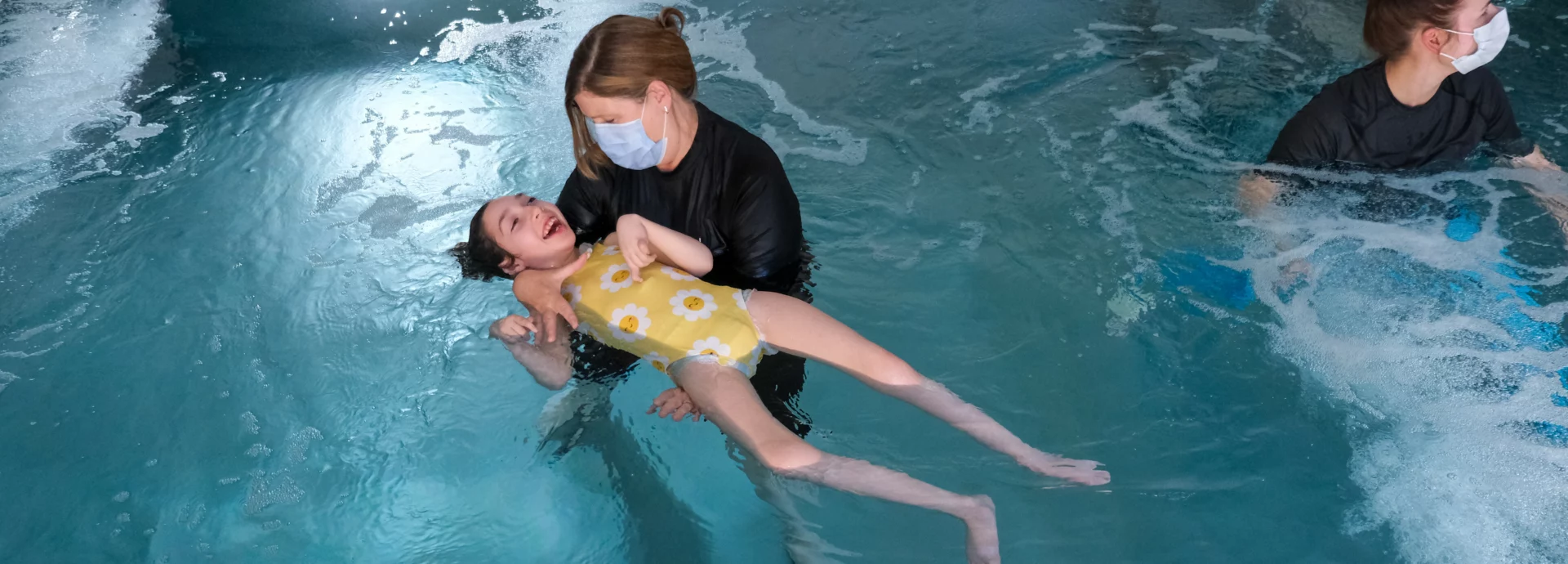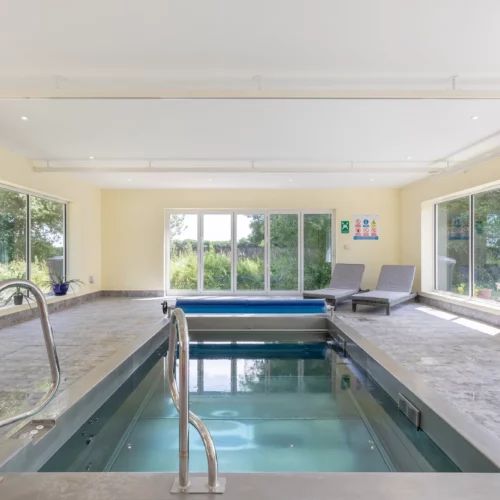How is a Hydrotherapy Pool Different From A Normal Swimming Pool?
This is a question we often get asked; hydrotherapy pools differ from traditional swimming pools in a lot of ways.
For a start, the purpose of a hydrotherapy pool is to provide a rehabilitative environment that will help to restore health and heal injuries. And exercising in water is very beneficial because it supports the person’s body weight.
You’d be able to tell the difference as soon as you walked into a room with a hydrotherapy pool because of the temperature.
What is the Hydrotherapy Pool Temperature Best Set At?
Hydrotherapy pool water temperature is typically about 33 — 36°C, which is significantly warmer than a normal swimming pool (that usually is no hotter than 28°C). The hotter water will make the room more humid.
Why does hotter water help heal injuries?
How does it feel when you climb into a nice hot bath at the end of the day? Relaxing, right?
Well that’s exactly how hydrotherapy pools work. Warm water makes your body and muscles relax, which in turn helps to heal injuries and promote bodily functions like circulation, respiration, and even pain relief.
There is a growing evidence base which suggests that heat stimulatory receptors are in the same place as nociceptive impulses (these are nerve cells that cause pain when stimulated). By introducing heat, it will essentially numb or override the sensation of pain, making it easier for the person to move and exercise uninhibited.

A different kind of hydrotherapy exercise
Hydrotherapy pools are specially designed to facilitate slow and methodical exercises that help to rehabilitate individuals, so it might not be the right place for you to practice your swimming time trials. Anyone who got into a pool and started practising their front crawl would soon struggle and get tired a lot quicker because of the heat.
That is precisely why hydrotherapy is much slower and softer. You would usually have a physiotherapist in the pool with you to demonstrate the exercises they want you to do depending on your injuries and your range of movement.
It isn’t like aquacise or aquarobics that are usually more demanding and stamina-based — hydrotherapy is all about building strength.
Who Can Benefit From Hydrotherapy?
This treatment can be used with a vast array of people with many varying conditions or injuries. One of the most common places we install hydrotherapy pools is in rehabilitation centres, although they are also used in SEN schools and private homes.
Here are a few examples of people who may use hydrotherapy:
- People who have suffered spinal injuries
- Children and young adults with learning difficulties and/or physical disabilities
- People living with Arthritis
- Athletes who are overcoming injuries
Can spas have hydro pools?
It is possible for spas to have hydro pools but might not be to the same high spec as other hydrotherapy pools. For example, places like Harrogate and Budapest have natural spas that produce naturally hot mineral water which has proven to be very relaxing and beneficial over time.
This water can be used in a hydrotherapy pool, but generally speaking, a person will benefit from hydrotherapy regardless of the water used in the pool.
So if you ever wondered how hydrotherapy was different, then we hope this answered your questions. It’s an incredibly beneficial kind of treatment that can work on numerous injuries and rehabilitative techniques, and we would urge anyone to take up hydrotherapy in a care plan (if appropriate/possible).



